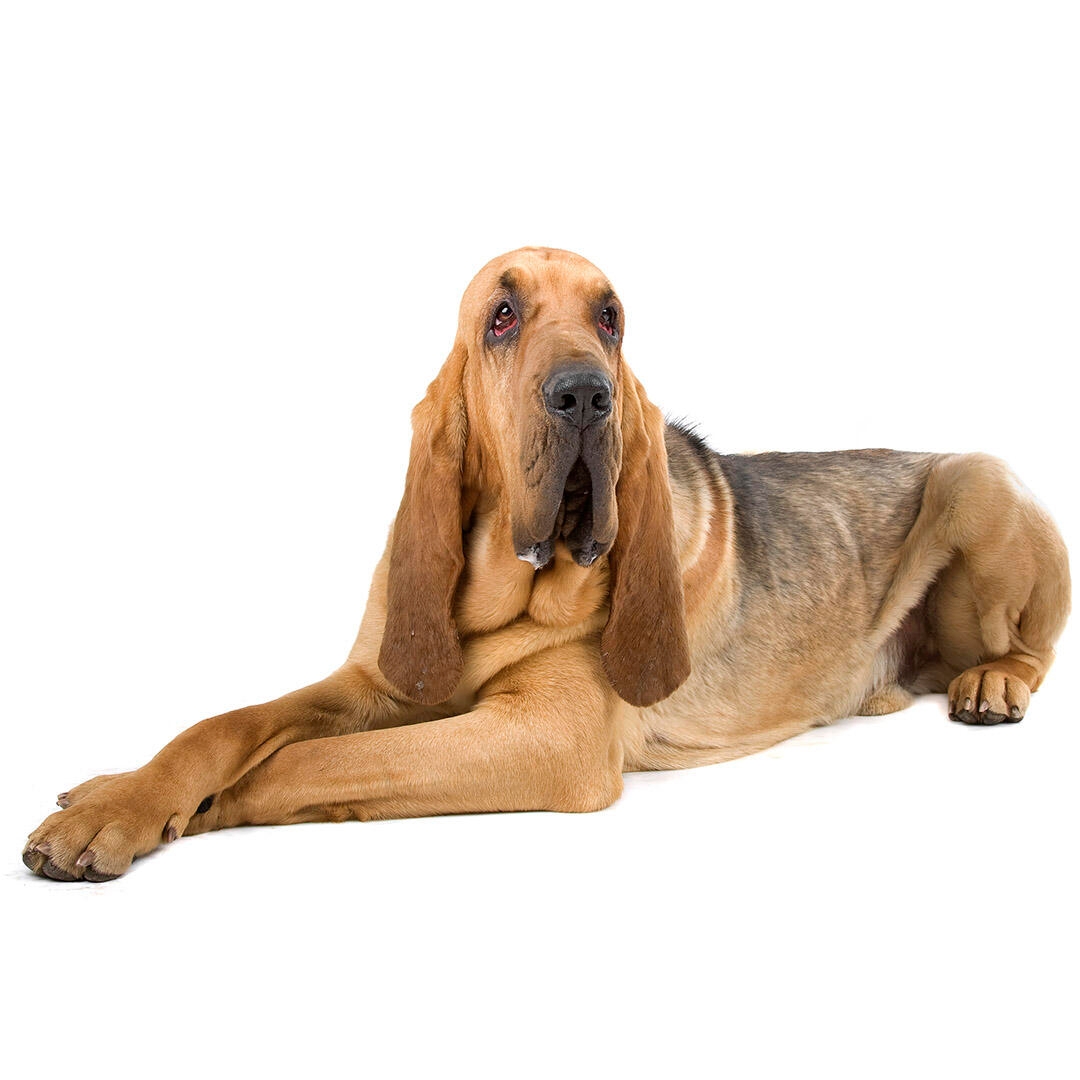
| Family-friendly: | 5/5 |
| Exercise needs: | 5/5 |
| Easy to train: | 3/5 |
| Tolerates being alone: | 2/5 |
| Likes other pets: | 5/5 |
| Energy level: | 5/5 |
| Grooming needs: | 3/5 |
| Shedding: | 4/5 |
Bloodhounds are prone to:
- Skin infections, as they have a large amount of skin compared to their body size. This results in skin folds where infection can develop.
- Hip dysplasia
- Elbow dysplasia
- Gastric dilatation volvulus
- Ear infections
Priority Kennel Club health schemes and testing:
- Hips dysplasia screening scheme
- Elbow dysplasia screening scheme
- Eye screening scheme
These are gentle-natured, affectionate dogs who usually get on well with children and can live in harmony with other dogs and household pets. They are friendly dogs who will welcome both wanted and unwanted visitors. Although quiet in the house, they can be very vocal outdoors. They are family dogs and do not like to be left alone.
| Family-friendly: | 5/5 |
| Exercise needs: | 5/5 |
| Easy to train: | 3/5 |
| Tolerates being alone: | 2/5 |
| Likes other pets: | 5/5 |
| Energy level: | 5/5 |
| Grooming needs: | 3/5 |
| Shedding: | 4/5 |
The ancestry of modern Bloodhound dog breeds can be traced back to the monastery of St. Huberts where dogs called St. Hubert’s Hounds were originally used to track wolves, big cats or deer, or to follow the trail of wounded game. The pale white versions of the breeds went on to be known as the Talbot Hound whereas the black and tans were called Bloodhounds.
The Bloodhound was brought to Britain by William the Conqueror and it was used for stag-hunting - following a wounded animal sometimes for amazingly long distances.
The scenting ability of the Bloodhound is extraordinary and they can easily track a human over long distances even after several days – and so while their original role was to help with hunting, they have found also work in law enforcement and in search and rescue.
You’ll need to be impervious to drool, understand scenthounds and have prior experience, and ideally own several other scenthounds, preferably Bloodhounds. The Bloodhound generally can’t be left alone and so suits someone working with scenthounds full-time. They require hours of steady exercise, in almost any weather and live to follow a scent to the ends of the earth.
As adults, the Bloodhound has phenomenal stamina and needs two-plus hours daily - but this needs to be sniffing exercise and not just mindless walking. Primarily tracking dogs, once on the trail of an enticing smell, they will be desperate to find its source!
Because of their size and growth rate, they must not be over-exercised as puppies. Care must be taken in the first year to ensure their bones and joints are given a proper chance to grow.
This is a big dog who needs a lot of countryside to sniff in! They will appreciate a big garden too - and you can use this for scent games at home.
Large breed dogs, as well as having large appetites, benefit from a different balance of nutrients including minerals and vitamins compared to smaller-breed dogs. The Bloodhound is prone to bloating and stomach problems; smaller, more frequent meals can help minimise this risk.
There is little grooming needed for this breed, as the coat is short and smooth. A brush over once in a while will suffice to remove loose and dead hairs. However, regular checks should be made of their ears and eyes to ensure early diagnosis of any infections.
The Bloodhound has little to no interest in any form of training that doesn’t involve using their nose! While they should be trained to walk (run!) on a harness and lead, finding a class where you can learn scentwork and sniffing games can give your Bloodhound an outlet for using their extraordinary nose and will keep them healthy and happy.
The Bloodhound makes a great dog for families as they are gentle and patient. They may be too big and slightly clumsy for smaller children however.
While many dogs are traditionally thought of as being good with children, all dogs and children need to be taught to get on with and respect each other, and be safe together. Even so, dogs and young children should never be left alone together and adults should supervise all interactions between them.